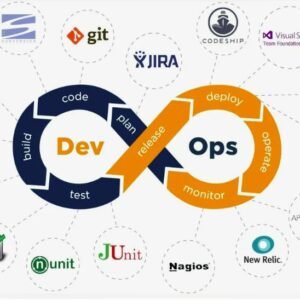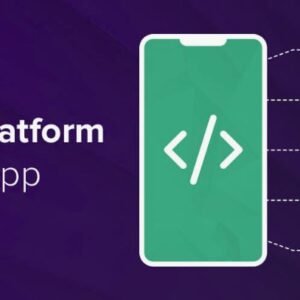In today’s fast-paced and dynamic business environment, organizations are increasingly adopting agile software development methodologies to deliver high-quality software products quickly and efficiently. Agile software development is a modern approach to software development that emphasizes flexibility, collaboration, and customer satisfaction. In this article, we will explore the fundamentals of agile software development methodology, its benefits, and how it differs from traditional software development methodologies.
Understanding Agile Software Development Methodology
Agile software development is an iterative and incremental approach to software development that emphasizes delivering working software in short development cycles called sprints. The agile methodology is based on the principles and values outlined in the Agile Manifesto, which was created in 2001 by a group of software development practitioners. The manifesto emphasizes the importance of individuals and interactions, working software, customer collaboration, and responding to change over following a prescribed process, comprehensive documentation, contract negotiation, and the importance of planning.
Agile software development methodology is characterized by several key principles:

Customer satisfaction: Agile development places a strong emphasis on delivering software that meets the needs of the customer. This is achieved through continuous collaboration between the development team and the customer throughout the project lifecycle.
Flexibility: Agile development is highly adaptive and can accommodate changes in requirements as they arise during the project lifecycle. This flexibility allows for more efficient use of resources and reduces the risk of project failure due to changing requirements.
Collaboration: Agile development places a strong emphasis on collaboration between team members, customers, and stakeholders throughout the project lifecycle. This collaboration ensures that everyone involved in the project has a clear understanding of the requirements and expectations.
Continuous improvement: Agile development encourages continuous improvement through regular retrospectives, where team members reflect on their performance during the sprint and identify areas for improvement. This feedback loop helps teams to learn from their mistakes and improve their processes over time.
Benefits of Agile Software Development Methodology
Agile software development methodology offers several benefits over traditional software development methodologies:
Faster time-to-market: Agile development allows for faster delivery of working software due to its iterative and incremental approach. This faster time-to-market enables organizations to respond more quickly to changing market conditions and customer needs.
Improved quality: By delivering working software in short sprints, agile development allows for more frequent testing and feedback, which results in higher quality software products. This focus on quality also reduces the risk of defects and errors in the final product.
Greater flexibility: Agile development’s adaptive nature allows for greater flexibility in responding to changing requirements during the project lifecycle. This flexibility reduces the risk of project failure due to changing requirements and enables teams to deliver more value to customers.
Improved collaboration: Agile development’s emphasis on collaboration between team members, customers, and stakeholders results in greater alignment between these groups throughout the project lifecycle. This alignment ensures that everyone involved in the project has a clear understanding of the requirements and expectations.
Reduced risk: By delivering working software in short sprints, agile development allows for more frequent testing and feedback, which reduces the risk of defects and errors in the final product. This focus on testing also reduces the risk of project failure due to unforeseen issues arising during implementation or testing phases.
Differences Between Agile Software Development Methodology and Traditional Software Development Methodologies
Agile software development methodology differs significantly from traditional software development methodologies such as Waterfall or V-Model:
Iterative vs Linear Approach: Traditional software development methodologies such as Waterfall or V-Model follow a linear approach where each phase must be completed before moving on to the next phase. In contrast, agile development follows an iterative approach where each sprint delivers working software that can be tested and refined before moving on to the next sprint. This iterative approach allows for greater flexibility in responding to changing requirements during the project lifecycle.
Collaborative vs Prescriptive Process: Traditional software development methodologies such as Waterfall or V-Model follow a highly prescriptive process with detailed documentation at each phase of the project lifecycle. In contrast, agile development places a strong emphasis on collaboration between team members, customers, and stakeholders throughout the project lifecycle, resulting in less documentation but greater alignment between these groups regarding requirements and expectations.
Faster Time-to-Market vs Longer Development Cycles: Traditional software development methodologies such as Waterfall or V-Model can result in longer development cycles due to their linear approach and emphasis on detailed documentation at each phase of the project lifecycle. In contrast, agile development’s iterative approach results in faster delivery of working software due to its shorter sprints and less emphasis on detailed documentation at each phase of the project lifecycle.
Agile Software Development Methodology: Best Practices and Tools
Agile software development methodology is a highly adaptive and iterative approach to software development that emphasizes collaboration, flexibility, and customer satisfaction. In this section, we will explore some best practices and tools that can help organizations to implement agile software development methodology successfully.
Best Practices for Agile Software Development Methodology:

Embrace Collaboration: Collaboration is a core principle of agile software development methodology. Teams should encourage collaboration between team members, customers, and stakeholders throughout the project lifecycle. This collaboration ensures that everyone involved in the project has a clear understanding of the requirements and expectations.
Prioritize Customer Satisfaction: Agile software development methodology places a strong emphasis on delivering software that meets the needs of the customer. Teams should prioritize customer satisfaction by continuously collaborating with customers throughout the project lifecycle to ensure that their needs are being met.
Embrace Change: Agile software development methodology is highly adaptive and can accommodate changes in requirements as they arise during the project lifecycle. Teams should embrace change by being open to feedback and willing to make adjustments to the project plan as needed.
Focus on Quality: Agile software development methodology emphasizes delivering working software in short sprints, which allows for more frequent testing and feedback. Teams should focus on quality by ensuring that each sprint delivers working software that meets the highest possible standards of quality.
Continuously Improve: Agile software development methodology encourages continuous improvement through regular retrospectives, where team members reflect on their performance during the sprint and identify areas for improvement. Teams should continuously improve by implementing changes identified during retrospectives and learning from their mistakes.
Tools for Agile Software Development Methodology:
Project Management Tools: Agile software development methodology requires a high degree of coordination and collaboration between team members, customers, and stakeholders throughout the project lifecycle. Project management tools such as Jira, Trello, or Asana can help teams to manage tasks, track progress, and collaborate effectively throughout the project lifecycle.
Version Control Tools: Agile software development methodology emphasizes delivering working software in short sprints, which requires a high degree of coordination between team members working on different parts of the same codebase. Version control tools such as Git or Mercurial can help teams to manage code changes effectively and ensure that everyone is working with the latest version of the codebase.
Continuous Integration and Continuous Delivery (CI/CD) Tools: Agile software development methodology emphasizes delivering working software in short sprints, which requires a high degree of automation in testing, building, and deployment processes. CI/CD tools such as Jenkins or Travis CI can help teams to automate these processes effectively and ensure that each sprint delivers working software that meets the highest possible standards of quality.
Collaboration Tools: Agile software development methodology emphasizes collaboration between team members, customers, and stakeholders throughout the project lifecycle. Collaboration tools such as Slack or Microsoft Teams can help teams to communicate effectively throughout the project lifecycle and ensure that everyone involved in the project has a clear understanding of the requirements and expectations.
Conclusion
Agile software development methodology offers several benefits over traditional software development methodologies due to its iterative approach, emphasis on collaboration between team members, customers, and stakeholders throughout the project lifecycle, shorter sprints resulting in faster delivery of working software, less emphasis on detailed documentation at each phase of the project lifecycle resulting in greater flexibility in responding to changing requirements during the project lifecycle, improved quality resulting from more frequent testing and feedback during each sprint, greater alignment between team members regarding requirements and expectations resulting from continuous collaboration throughout
FAQs
Agile software development methodology is a modern approach to software development that emphasizes flexibility, collaboration, and customer satisfaction. It is characterized by short development cycles called sprints, continuous collaboration between team members, customers, and stakeholders, and a focus on delivering working software quickly and efficiently.
The principles of agile software development methodology are outlined in the Agile Manifesto, which emphasizes individuals and interactions, working software, customer collaboration, and responding to change over following a prescribed process, comprehensive documentation, contract negotiation, and the importance of planning.
Agile software development methodology offers several benefits over traditional software development methodologies, including faster time-to-market, improved quality, greater flexibility, improved collaboration, and reduced risk.
Some best practices for implementing agile software development methodology include embracing collaboration, prioritizing customer satisfaction, embracing change, focusing on quality, and continuously improving.
A sprint is a short development cycle in agile software development methodology, typically lasting two to four weeks, during which the development team delivers working software that can be tested and refined before moving on to the next sprint.








